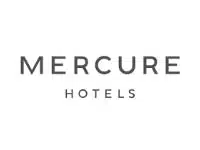
Personenzentrierte Erinnerungspflege ist die Zukunft des Seniorenlebens. Ist Ihre Gemeinde darauf vorbereitet?
Gedächtnisverlust wird immer häufiger: Die Zahl der Demenzfälle in den USA wird bis 2030 voraussichtlich um 30% steigen. Dieser Aufwärtstrend bedeutet, dass die Welt des Seniorenwohnens die Art und Weise der Pflege anpassen muss, um den Bedürfnissen der Bewohner gerecht zu werden.
Die Einführung eines personenzentrierten Pflegekonzepts kann Ihrer Gemeinschaft helfen, eine qualitativ hochwertige Pflege zu bieten - und sich dabei von den anderen Angeboten in Ihrer Umgebung abzuheben. Lassen Sie uns ein wenig tiefer eintauchen, um das Konzept der personenzentrierten Gedächtnispflege zu verstehen, um zu erfahren, wie Sie es in Ihrer Gemeinschaft anwenden können, und um die zielgerichtete Technologie kennenzulernen, die dabei helfen kann, einen personenzentrierten Ansatz zu verfolgen:
Was ist personenzentrierte Gedächtnispflege?
Personenzentrierte Gedächtnispflege ist ein Ansatz, der sich auf die individuelle Unterstützung und das Engagement für Senioren konzentriert, die mit Demenz und anderen Gedächtnisverlusten leben. Dieser Ansatz erfordert, dass die Mitarbeiter die Pflegestrategien so anpassen, dass sie den kognitiven, emotionalen und sozialen Bedürfnissen jedes Einzelnen gerecht werden.
Die personenzentrierte Pflege zielt nicht nur auf die Bewältigung von Symptomen ab, sondern konzentriert sich auf die Verbesserung des allgemeinen Wohlbefindens jedes Bewohners unter Wahrung seiner Individualität und Förderung sinnvoller sozialer Beziehungen.
Ein Artikel der Oxford University Press liefert weitere Einzelheiten über die personenzentrierte Gedächtnispflege und definiert sie als "eine Pflegephilosophie, die auf den Bedürfnissen des Einzelnen aufbaut und davon abhängt, dass man die Person durch eine zwischenmenschliche Beziehung kennt". Den Autoren des Artikels zufolge stellt die personenzentrierte Pflege "das traditionelle medizinische Pflegemodell in Frage, das dazu neigt, sich auf Prozesse, Zeitpläne sowie Personal- und Organisationsbedürfnisse zu konzentrieren", und erfordert von den Leitern von Seniorenheimen, sich diesen Ansatz zu eigen zu machen, um optimale Ergebnisse zu erzielen.
Vier Wege zu einer personenzentrierten Gedächtnispflege
Wie sieht also eine personenzentrierte Gedächtnispflege im Alltag aus? Wie können Sie diese Praktiken in Ihrer Gemeinde umsetzen? Hier sind vier Ideen:
Erstellung individueller Pflegepläne
Jeder Ihrer Bewohner hat einen einzigartigen Hintergrund, eine eigene Persönlichkeit und eine Reihe von Leidenschaften, denen er nachgehen möchte. Zur personenzentrierten Gedächtnispflege gehört die Erstellung individueller Pflegepläne, die diese Faktoren berücksichtigen. Wohnen im Alter Die Verantwortlichen sollten sicherstellen, dass die Maßnahmen und Aktivitäten auf die spezifischen Bedürfnisse und Vorlieben jedes Einzelnen zugeschnitten sind.
Förderung der Autonomie und Würde der Bewohner
Gedächtnisverlust bedeutet für die Bewohner von Seniorenheimen oft eine Einschränkung ihrer Unabhängigkeit. Ein zentraler Grundsatz der personenzentrierten Pflege besteht darin, den Bewohnern die Möglichkeit zu geben, ihre Selbstständigkeit so weit wie möglich zu erhalten. Das Pflegepersonal kann den Senioren helfen, sich würdevoll zu fühlen, indem es sie in die Entscheidungsfindung über ihre Pflegepläne einbezieht, ihr Feedback bewusst berücksichtigt und einen Plan erstellt, der die Stärken des Bewohners gegenüber seinen Schwächen fördert.
Ermutigen Sie zu sinnvollem Engagement
Engagement ist mehr als nur ein Zeitvertreib; Aktivitäten wie Spielen, Basteln, Computerarbeit und soziale Kontakte mit anderen Bewohnern können das Risiko einer leichten kognitiven Beeinträchtigung bei Erwachsenen ab 70 Jahren um bis zu 30% senken.
Im Sinne der Personalisierung ist es wichtig, Aktivitäten zu fördern, die mit den Interessen, Hobbys und früheren Erfahrungen der Bewohner übereinstimmen. Eine Erinnerungstherapie kann den Bewohnern helfen, sich mit Erinnerungen und Menschen aus ihrer Vergangenheit zu verbinden. Musiktherapie und Kunstprogramme können ihre kreative Seite anregen. Generationsübergreifende Aktivitäten - wie z. B. gemeinschaftsfördernde Maßnahmen - fördern sinnvolle soziale Beziehungen.
Förderung eines unterstützenden Umfelds
Die Bewohner können von einem physischen Umfeld profitieren, das Komfort, Sicherheit und Vertrautheit fördert. Sonida Senior Living, früher bekannt als Capital Senior Living, ist ein hervorragendes Beispiel dafür, wie eine physische Umgebung eine personenzentrierte Pflege fördern kann.
Sonidas Magnolia Trails-Programm konzentrierte sich auf die kleinsten Details jeder Gemeinschaft, von der Hintergrundmusik, die während der Mahlzeiten gespielt wurde, bis zur Einrichtung von interaktiven Erlebnisstationen für Haustierpflege, Gartenarbeit und Holzbearbeitung.
Das Programm führte zu unglaublichen Ergebnissen. Innerhalb von zwei Jahren stieg die Belegung von 69% auf 100% mit einer Warteliste, und die durchschnittliche Monatsmiete stieg um mehr als 5%.
Technologie zur Unterstützung einer personenzentrierten Gedächtnispflege
Die Führungskräfte einer Gemeinschaft sind die stärkste Kraft, wenn es darum geht, eine personenzentrierte Gedächtnispflege zu verwirklichen. Eine Möglichkeit, wie sie positive Veränderungen vorantreiben können, ist die Investition in zweckmäßige Technologie, die a.) dem Personal das Leben erleichtert und b.) den Bewohnern neue Möglichkeiten eröffnet.
Hier sind zwei Beispiele:
Uniguest: Individuelles Reporting und Analysen
Wenn es darum geht, hochgradig personalisierte Pläne für die Gedächtnispflege zu erstellen, ist Sichtbarkeit sehr wichtig. Über UniguestSagely Reports können sich die Verantwortlichen in der Gemeinde ein klares Bild von den Gewohnheiten und Erfahrungen ihrer Einwohner machen, einschließlich des Engagements, der Aktivitätsinteressen und der Teilnahme an Wellness-Aktivitäten. Auf diese Weise wissen Sie, welche Aktivitäten das größte Interesse wecken und welche Bewohner möglicherweise andere Möglichkeiten zur Beteiligung benötigen.
Was man nicht misst, kann man auch nicht verbessern, und hier kommen die Berichts- und Analysemöglichkeiten von Uniguest ins Spiel.
Eversound: Eine Hörlösung für mehr Konzentration
EversoundDas drahtlose Kopfhörersystem ist die bevorzugte Hörlösung für Seniorenwohnungen und wurde speziell entwickelt, um die Kommunikation für alle Mitglieder Ihrer Gemeinschaft zu verbessern, insbesondere für diejenigen, die unter Gedächtnisverlust leiden.
Die Kopfhörer von Eversound verstärken den Klang und eliminieren Hintergrundgeräusche, so dass sich die Bewohner ohne Ablenkung auf die Erinnerungs- oder Musiktherapie konzentrieren können. Der Sender des Systems kann entweder als Mikrofon für Gespräche dienen oder Audio von einem anderen Gerät übertragen - Fernseher, iPad, Telefon usw. Wenn Sie weitere Informationen über Eversound wünschen, sprechen Sie noch heute mit unserem Team.
Die personenzentrierte Pflege hilft den Verantwortlichen für Seniorenwohnungen, ihr Angebot an Gedächtnispflege zu differenzieren. Wie werden Sie den Aufbau einer personenzentrierten Grundlage für Ihre Gemeinschaft fortsetzen?









